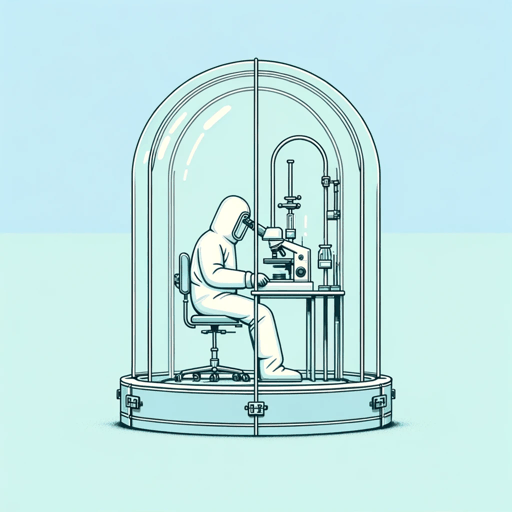50 pages • 1 hour read
Richard PrestonThe Hot Zone: The Terrifying True Story of the Origins of the Ebola Virus
Nonfiction | Book | Adult | Published in 1994A modern alternative to SparkNotes and CliffsNotes, SuperSummary offers high-quality Study Guides with detailed chapter summaries and analysis of major themes, characters, and more.
Summary and Study Guide
Overview
The Hot Zone by Richard Preston is a non-fiction thriller, published in 1994, two years after his article “Crisis in the Hot Zone” appeared in The New Yorker. Preston writes often on Ebola, bioweapons, and emerging viruses. The Hot Zone deals with the breaking of Ebola into the human species and a 1989 incident in which an Ebola-like virus, the Reston virus, sweeps through a monkey quarantine facility outside of Washington, DC. The book served as the basis for the movie Outbreak (1995) and the National Geographic television drama The Hot Zone (2019). Preston emphasizes The Illusion of Viral Agency, The Dehumanizing Nature of Viruses, and The Murky Ethics of Virus Research. This guide uses the Anchor Books e-book edition from March 14, 2012.
Language note: The Hot Zone refers to events that took place in then-Zaire in 1976. This country is now known as the Democratic Republic of the Congo.
Content Warning: This source material contains graphic descriptions of the impact of filoviruses on human and animal bodies.
Summary
The Hot Zone, by Richard Preston, focuses on the history and emergence of several Biosafety Level 4 pathogens, including Ebola. A Biosafety level is a set of containment precautions used by a laboratory to protect scientists from the diseases they are working with. Biosafety Level 4 agents are the most dangerous, as they are highly infectious, have a high fatality rate, and have no known prophylactics, treatments, or cures. The thriller element of The Hot Zone is provided by the true story of an outbreak of Ebola among primates in a monkey house near Washington, DC, in the 1980s, and the fear that it could spread to the surrounding human population given the extreme infectiousness of the disease. The book is divided into four sections: “The Shadow of Mount Elgon,” “The Monkey House,” “Smashdown,” and “Kitum Cave.”
The first segment of The Hot Zone is the story of “Charles Monet” (a pseudonym), a French expatriate who begins exhibiting symptoms of illness just a few days after visiting Kitum Cave on Mount Elgon in Kenya. The effects of the disease are described in vivid detail, beginning with the early stages in which Monet begins to complain of headache, backache, “red eye” and vomiting. From there the disease is described by Preston as liquefying connective tissue, causing extensive hemorrhaging from “every orifice,” and causing the general corruption of internal organs (43). After only two weeks, Monet arrives at a hospital in Nairobi where he collapses in the waiting room of the Casualty department. A young physician, Dr. Shem Musoke, becomes infected after Monet vomits in his face. Musoke’s colleague, Dr. David Silverstein, helps him survive the disease and learns from other researchers that Musoke has Marburg virus, a rare and nearly unknown filovirus that affects humans and other primates.
In 1987, after a Danish boy named “Peter Cardinal” dies of Marburg after visiting Kitum Cave, scientific attention focuses on the cave as the potential home of the host animal that carries Marburg virus. American scientist Eugene Johnson leads an expedition to Kitum Cave in 1988 but is unsuccessful in finding any infected animals or identifying the host. There are several other vignettes involving Biosafety Level 4 agents in this section, including the history of the Marburg virus’s first identification in Marburg, Germany; the story of Yu G., who is the first person to die from Ebola Sudan in 1976; and that of Mayinga N., a nurse who becomes infected with Ebola Zaire after treating a patient who dies of the disease. Mayinga is at first in denial about her symptoms and spends two days in the city before returning to the hospital, putting an unknown number of people at risk of infection. Also featured in “The Shadow of Mount Elgon” is the story of Lieutenant Colonel Nancy Jaax. As a veterinarian and scientist for the US Army during the 1980’s, Jaax is working on an experiment involving Ebola. While at home preparing dinner, she accidentally cuts herself. Later, she is working on an experiment involving an infected dead monkey, and the glove protecting her injured hand tears, nearly exposing her to contaminated blood.
The second and third sections of the book, “The Monkey House” and “Smashdown,” chronicle USAMRIID’s involvement in the extermination of hundreds of monkeys in Reston, Virginia in 1989. A monkey house in Reston, less than 15 miles from Washington, DC, received a shipment of 100 wild monkeys; within four weeks of delivery, 29 of the monkeys had died. The veterinarian for the house, Dan Dalgard, examines the monkeys and sends samples to a virologist, Peter Jahrling at USAMRIID. Ultimately, it looks as if the monkeys are infected with Ebola Zaire. The Army takes on the task of euthanizing all 450 remaining monkeys in the facility under Level 4 precautions. This does not go completely smoothly. There are several occasions of near contamination: once when a monkey not properly sedated wakes up and struggles with one of the scientists, another when a monkey escapes its cage, and incidents in which the pressurized Racal space suits worn by scientists tear or malfunction. After all this effort and suspense, it later becomes clear that the monkeys are carrying a strain of Ebola that does not present symptoms in humans. The strain becomes known as Reston disease.
In the fourth section of the book, “Kitum Cave,” Preston himself visits Kitum Cave in full hazmat gear in the culmination of the book. While the cave is occupied by many animals that could potentially carry the disease, Preston is not looking for the host, but seeking to bring his story back to its origins. Preston warns of similarly dangerous diseases, such as the AIDS virus, and the likelihood that other, deadlier outbreaks will occur in the future.
Related Titles
By Richard Preston




